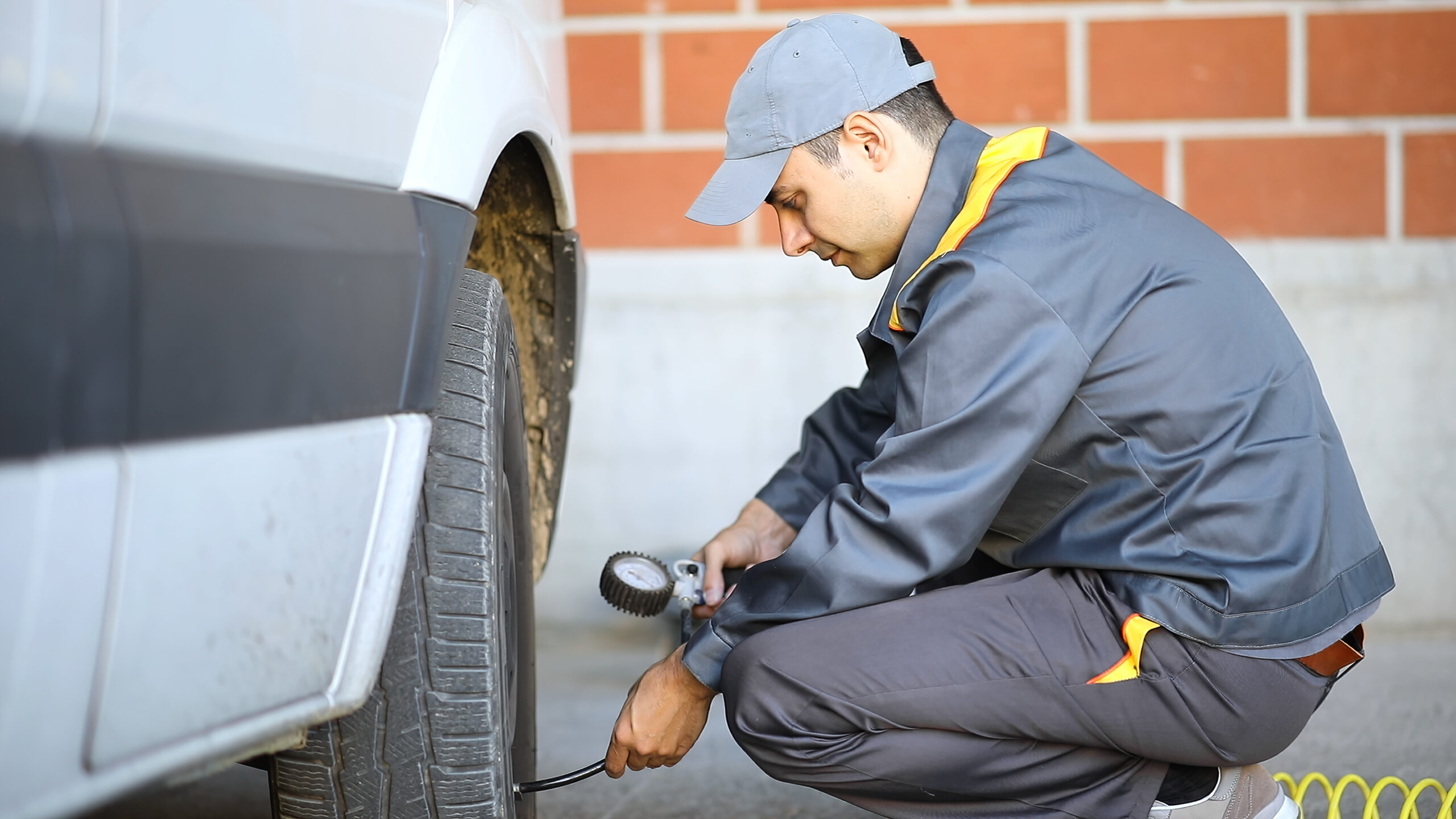
Trend Uncovered: What's Keeping Fleets Tied to Their Owner Manuals?
05 April 2024
Read time: 6 min
Rethinking Manuals-Based PMs
How relevant are traditional owner’s manuals for maintaining fleet vehicles today? With so many asset-tracking solutions on the market, you might start to wonder if it’s worth relying on owner’s manuals for preventive maintenance (PM) anymore. Pitstop’s product development and customer success teams have spoken with hundreds of fleets, discovering that many still use these manuals as a foundational strategy for scheduling PMs. “Follow your 52-week PM plan and keep an eye on it.” Following this plan can be challenging, as we know how unpredictable disruptions like on-the-road breakdowns can lead to backlogs in the shop. In this article, we’ll navigate through the current state of owner manual-based PMs and their effects on fleet longevity.
What Owner-Manual Repair Guides Can Tell You
Your owner’s manual is a comprehensive guide packed with essential information, from initial setup to troubleshooting tips. Although it doesn’t encompass every possible issue, it provides crucial insights into the finer details of your vehicle.
For example, your owner’s manual will explain:
- Maintenance Schedule: The manual may specify that the oil should be changed every 5,000 miles or every six months, whichever comes first. It might also indicate that the brake fluid should be checked and possibly replaced every 20,000 miles or two years.
- Fluid Specifications: For a specific model, the manual might recommend using 5W-30 synthetic motor oil for the engine and DOT 3 brake fluid. It would Manuals specify the types of fluids your vehicle needs, including engine oil, transmission fluid, coolant, and brake fluid, along with the recommended grades and replacement intervals.
- Parts Replacement: The timing belt might need replacement every 60,000 miles to prevent a catastrophic failure that could damage the engine. The air filter could be recommended for inspection every 15,000 miles and replacement if visibly dirty to ensure proper air intake and engine performance.
- Tire Care: The manual might instruct to maintain tire pressure at 32 PSI for normal driving conditions, check tire pressure monthly, and rotate tires every 5,000 miles to ensure even wear and extended tire life.
- Troubleshooting Tips: If the vehicle fails to start, the manual might guide you to check the battery terminals for corrosion and ensure that the battery is adequately charged, potentially saving a trip to the mechanic for what could be a simple fix.
- Warranty Information: The warranty section might state that performing and documenting regular maintenance according to the schedule in the manual is necessary to keep the warranty valid. It could specify that failure to change the oil regularly might void warranty coverage on the engine.
The Shortcomings of Relying Solely on Owner’s Manuals
One municipal fleet our customer success team spoke with, experienced multiple misfires across all cylinders which initiated a check engine light. In many similar scenarios, driver-reported issues from abnormalities on-trip resulted in a road call or tow back to the shop for repairs. This unplanned downtime isn’t just a logistical inconvenience; it’s a link in a chain of operational disruptions. This means late deliveries, increased downtime, and inflated maintenance costs. Everything falls apart and causes delays for the rest of the scheduled PMs, overwhelming internal shops. Relying too heavily on driver-reported issues and owner manuals fails to predict or prevent unforeseen issues stemming from actual vehicle usage and conditions.
Diversity in Driving Patterns and Environments
Not every fleet has the luck of having a shop manager who brings over 25 years of hands-on experience with vehicles and trailers. At Pitstop, our product team learned from onboarding fleets that it takes time and mistakes to understand the specific fault code patterns that can lead to breakdowns in your unique fleet. It’s a process that’s also challenging to standardize across different team members.
Pitstop piloted a fleet for a major online retail company, driving sprinter vans. Our data team identified high tire turnover rates due to the frequent stop-and-go nature of its deliveries. Another customer, operating a fleet of sprinter vans in the telecommunications sector, experiences longer stops at residential homes for service. They encounter more battery voltage issues instead. These differences highlight why maintenance schedules must consider the conditions the vehicles endure.
In addition, the environment also plays a significant role in shaping maintenance needs. Our team has seen vehicles in coastal areas requiring more frequent checks for rust and corrosion, while those in dusty regions might need more regular air filter replacements and engine checks to prevent overheating. These characteristics aren’t considered for manual-based PMs to optimize vehicle health and operational reliability.
The Impact of Vehicle Age
In our journey alongside fleet customers, we’ve witnessed firsthand the evolving landscape of commercial vehicle management. The resilience of these vehicles is nothing short of remarkable, with many surpassing the lifespan expected of personal-use vehicles. In 2023, the average age of fleet vehicles in the U.S. hit a new high of 12.7 years, bumping up from 12.2 the year before. This upward trend isn’t just a number; it’s a reflection of challenges like supply chain delays and economic pressures.
At Pitstop, our team understands the precarious position fleet managers find themselves in, compelled to stretch the operational life of their vehicles further than ever before. As vehicles age, the cost balance between regular maintenance and the risk of significant repairs or the need for replacement becomes a central concern. This balancing act, between maintaining cost efficiency and managing the complexities of vehicle upkeep, is a challenge we’ve seen our customers navigate time and again.
The Case for AI-Powered Dynamic Preventive Maintenance
You don’t have to abandon preventative maintenance when taking on a predictive maintenance approach, the two should work in tandem. Solutions such as Pitstop leverage real-time telematics data, service history records, and preventive maintenance schedules to find that sweet spot between static and dynamic maintenance:
Real-Time Data Utilization: By continuously monitoring vehicle health through telematics and onboard diagnostics, fleet managers are sent real-time critical alerts about possible component breakdowns, such as a low battery voltage, allowing your team to prepare for downtime on their own terms.
Customized Predictive Analytics: Pitstop’s advanced analytics such as component algorithms, machine learning, and artificial intelligence can predict maintenance needs based on actual vehicle usage and historical service data. This means you can accurately address high-risk vehicles, reducing unnecessary service while preventing unexpected failures.
Plan Maintenance Visits Strategically: Providing insights into vehicle/trailer health can help management quickly and confidently move up schedules for assets with critical issues while leaving assets with minor active issues to run the route, avoiding unnecessary downtime. All the while, working on top of your current workflow process.
Improving Repair Quality: Pitstop’s Vehicle Health Reports include prescriptive predictive alerts, current fault codes, and DVIR information, allowing your mechanics to perform maintenance without future rework.
Why It’s Time to Think Outside the Manual
Take a moment to think about what managing a fleet means to you. It’s not just about sticking to the maintenance schedule that comes with your vehicles. The methods of fleet management are shifting, and it’s time to find creative ways to get more done while staying on top of PMs like never before. Using tools like Pitstop’s predictive analytics can help you answer tough questions like when is the right time to acquire new vehicles to your fleet or how to maximize the ones you’ve already got.
This shift isn’t just about keeping pace; it’s about setting the pace, making sure every move you make not only addresses your immediate needs but also fits into your bigger plan.
